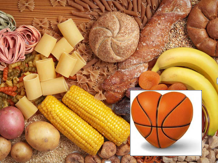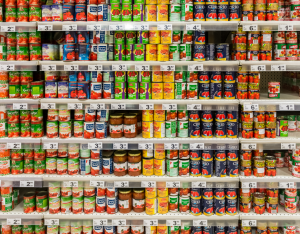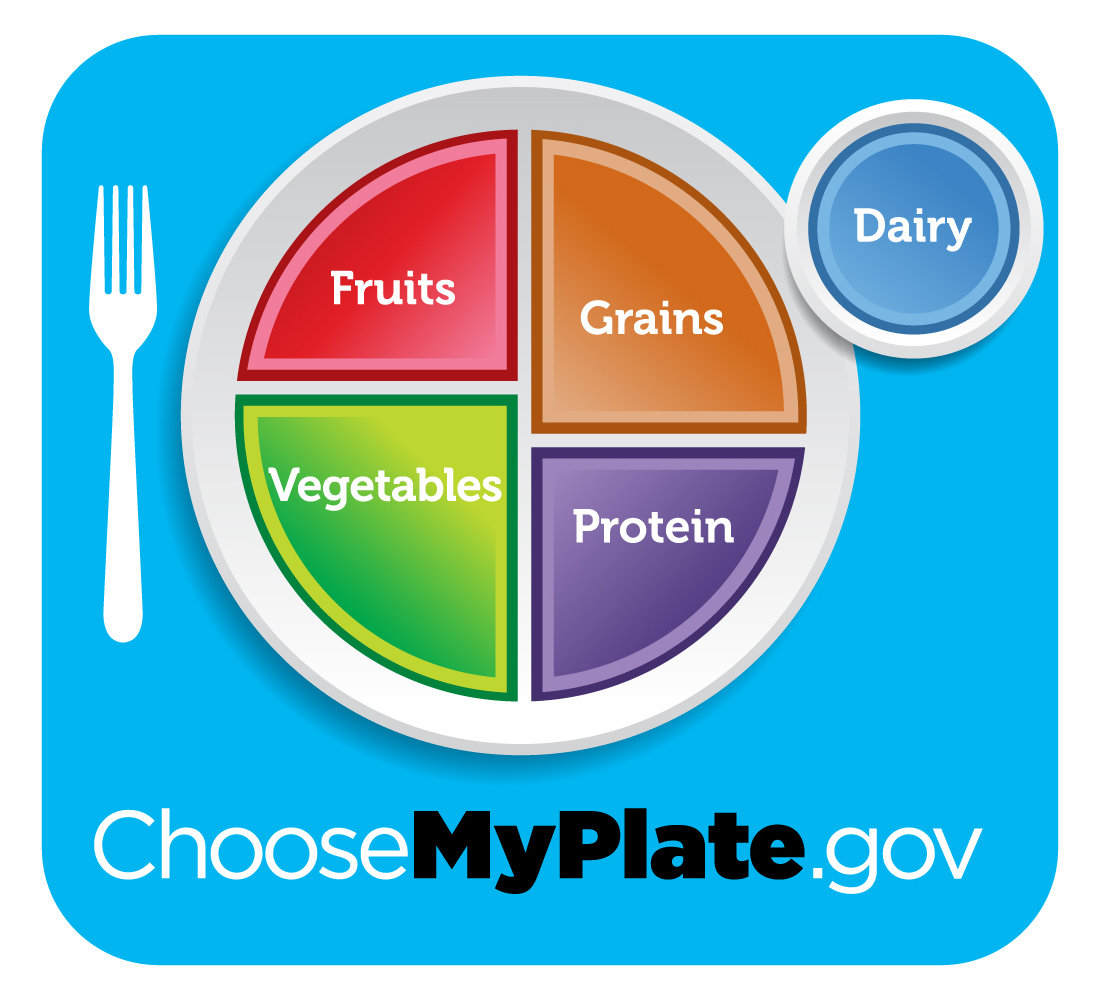
by Angela Hinkle | Mar 11, 2016
 Starchy foods are healthy – eat them! Starchy foods make you fat – don’t eat them! How do you score a healthy starch bracket with all this contradictory madness? For each round of your daily eating game, choose a variety of healthy starchy foods made up of whole grains, vegetables, and fruits. These starchy foods are rich in vitamins, minerals, and fiber and are the main source of carbohydrates to provide our muscles, brain, and other organs with energy.
Starchy foods are healthy – eat them! Starchy foods make you fat – don’t eat them! How do you score a healthy starch bracket with all this contradictory madness? For each round of your daily eating game, choose a variety of healthy starchy foods made up of whole grains, vegetables, and fruits. These starchy foods are rich in vitamins, minerals, and fiber and are the main source of carbohydrates to provide our muscles, brain, and other organs with energy.
Choose starchy foods with little or no added fats, sugar, or sodium. Give these starchy foods a spin in your diet: whole wheat flour, pumpkin, popcorn, brown rice, potato with the skin, corn, whole grain barley, acorn squash, oatmeal, quinoa, green peas, and plantains or bananas.
Try whole grain cereals for breakfast, a baked potato with the skin as part of your lunch, and squash with brown rice with your dinner.
Try to keep the processed white flour products with added sugar to a minimum. These starchy foods are the ones that tend to add on the pounds without the good-for-you nutrients.
Don’t just stay in the game, be a slam dunk winner! Eat healthy starchy foods every day.
For more information, check out this site from the American Diabetes Association. http://www.diabetes.org/food-and-fitness/food/what-can-i-eat/making-healthy-food-choices/grains-and-starchy-vegetables.html
by Ginny Hinton | Feb 10, 2016
 Sometimes canned foods get a bad rap. Often, concerns are valid because canned foods tend to be high in unwanted salt and/or sugar. The good news is that you can buy fruits canned in their own juice and vegetables or beans labeled “low-sodium or” no salt added”. By draining and rinsing your canned produce with water, you can also lower the sodium or sugar content and have a healthful – and inexpensive – solution to balancing your child’s nutritional needs. For example, draining and rinsing canned beans lowers their sodium levels by as much as 41 percent.
Sometimes canned foods get a bad rap. Often, concerns are valid because canned foods tend to be high in unwanted salt and/or sugar. The good news is that you can buy fruits canned in their own juice and vegetables or beans labeled “low-sodium or” no salt added”. By draining and rinsing your canned produce with water, you can also lower the sodium or sugar content and have a healthful – and inexpensive – solution to balancing your child’s nutritional needs. For example, draining and rinsing canned beans lowers their sodium levels by as much as 41 percent.
We know that buying local fresh fruits and vegetables in season is a smart idea but kids can be picky. The Brussels sprouts or turnips that are available in the winter might not appeal to a child who only wants peaches. Benefits of buying canned foods include:
- Most canned fruits and vegetables are packaged within hours of being picked. This means the foods keep their peak flavor and nutrients.
- Canned fruits and vegetables are peeled, cut and ready to use in recipes. They “get you there” quicker and easier, usually with the same or even more nutrition than fresh or frozen. For example, did you know that canned pumpkin has three times more Vitamin A than fresh pumpkin?
- Canned fruit and vegetable selections are available year-round. Canned foods can offer reliable, great-tasting ingredients when fresh produce is not in season.
- Canned foods can be used in recipe “hacks” to improve nutrition. (“Hacks” are tricks that aid in the preparation or reduce the cooking time in recipes.) For example, soups can be thickened with a combination of pureed canned white beans and low-sodium vegetable or chicken stock instead of the traditional – and fattening – flour and butter. Canned evaporated skim milk can be used in equal amounts to replace cream in recipes for a fraction of the fat content.
All in all, canned foods can be used in any season to create a healthy plate. Just watch the sugar and salt content to create inexpensive, healthful and tasty meals your kids will love!
References:
- Kendall, A.R. and Dahl, W.J. (2015). Shopping for Health: Vegetables. University of Florida/IFAS electronic publication: edis.ifas.ufl.edu/fs165.
- Jones, J.B., and J.R. Mount. (2009). Sodium Reduction in Canned Bean Varieties by Draining and Rinsing. 209. Institute of Food Technologists Conference Poster. Anaheim, California.
- Tavoletti, R. (2015). The Time is “Ripe” for Canned Food. Canned Food Alliance. http://www.mealtime.org/article/the-time-is-ripe-for-canned-food.aspx?siteLocation=c8e9a60a-8e4d-45ef-9434-624be5cbf61b
- Lydon, K. (2015). It’s No Trick, Treat Yourself to Better Nutrition with These Recipe Hacks. Canned Food Alliance. http://www.mealtime.org/article/its-no-trick-canned-food-recipe-hacks.aspx?siteLocation=c8e9a60a-8e4d-45ef-9434-624be5cbf61b .

by Dorothy C. Lee | Jan 4, 2016

A Win-Win Super Bowl Party
Get defensive about your health. These easy-to-tackle recipes are just as tasty, but lower in fat and calories than typical game-day fare. It’s a Win-Win situation.
Skip the six-foot-long sub sandwich usually drenched in mayonnaise. Instead, serve a soup and sandwich smorgasbord with a variety of low-fat cheeses, whole grain breads, fresh, low-sodium cold cuts, and lots and lots of fresh vegetables. Serve soups that are hearty and full of vegetables or grains.
Swap calorie-laden soft drinks with 100% fruit juice or vegetable juice. Prepare mock cocktails using half juice and half seltzer water for a healthy, refreshing beverage.
Set up a make-your-own sundae bar. Use low-fat, protein-rich Greek yogurt and add low-fat granola and fresh or frozen fruit like strawberries, blueberries, even dried fruit. Top off yogurt sundaes with nuts.
Replace chips with vegetable sticks or fruit, or try making your own tasty pita chips. Recipe follows and it only takes a few minutes. Serve a store-bought salsa or a homemade bean dip (see recipe) with carrots, celery, red pepper strips, and cucumbers instead of high-fat dips and salty chips.
If you are going to serve dessert, opt for fruit—fresh, frozen, or canned in its own juice, or there are sugar-free options.
These game day decisions will help you develop a winning game plan!
Garlic & Herb Pita Chips
4-6 whole wheat pitas
2 tablespoons olive oil
1 teaspoon Italian seasoning
½ teaspoon garlic powder
¼ teaspoon salt
Coat 2 large baking sheets with non-stick cooking spray.
Cut pitas into 8 wedges each and separate each wedge at the fold.
Place the pita wedges in an even layer on the baking sheets.
Brush wedges with oil and sprinkle with Italian seasoning, garlic powder, and salt.
Bake at 350°F for 6 to 10 minutes or until golden brown.
May be baked ahead of time and stored in an airtight container for up to 4 days.
Pinto Bean Salsa Dip
1 (approximately 15-ounce) can pinto beans, drained and rinsed, or
1½ cups cooked dried beans
1 cup shredded cheese
½ to 1 cup chunky salsa
1 to 2 tablespoons chopped onion (optional)
¼ to ½ teaspoon chili powder or to taste (optional)
Mash beans with a fork. Mix in cheese. Stir in enough salsa until mixture is desired consistency for dipping. Add onion and seasoning as desired. Serve cold or cook, stirring, over medium heat until the cheese melts and the mixture is well-blended and hot (about 5 minutes).
For further information contact:
Dorothy C. Lee, C.F.C.S.
UF IFAS Extension Escambia County
3740 Stefani Road
Cantonment, FL 32533-7792
(850) 475-5230
dclee@ufl.edu

by Marie Arick | Oct 2, 2015
![myplate_blue[1]](https://nwdistrict.ifas.ufl.edu/fcs/files/2015/10/myplate_blue1-150x150.jpg) The numbers are in and, according to the Centers for Disease Control and Prevention (CDC), 20% or more of the United States adult population is obese in each state. This data was collected during the Behavioral Risk Factor Surveillance System that involves health-related telephone surveys. It has long been discussed in our society that obesity is a growing concern for our population. Many initiatives have been developed to address this issue, such as MyPlate and First Lady Michelle Obama’s Let’s Move! Yet, we still fail to take this to heart.
The numbers are in and, according to the Centers for Disease Control and Prevention (CDC), 20% or more of the United States adult population is obese in each state. This data was collected during the Behavioral Risk Factor Surveillance System that involves health-related telephone surveys. It has long been discussed in our society that obesity is a growing concern for our population. Many initiatives have been developed to address this issue, such as MyPlate and First Lady Michelle Obama’s Let’s Move! Yet, we still fail to take this to heart.
Obesity has been linked to cancer, heart disease, diabetes, and hypertension. All of these can be linked to premature death. And yet, we still pick up those forks and stay off our feet. Even worse, we set a poor example for our children. Many people operate under the assumption that “it does not apply to me,” but it does. The definition of obesity is having a body mass index (BMI) of 30 or higher. The BMI is calculated using your weight in kilograms and dividing this by your height in meters squared. Thankfully, the CDC is one of many sources that has a BMI calculator online to make it simple. The first step is to determine your BMI using one of these calculators, and then to understand what that number represents. The following chart from the CDC explains the results for adults.
The standard weight status categories associated with BMI ranges for adults are shown in the following table:
BMI Weight Status
Below 18.5 Underweight
18.5 – 24.9 Normal or Healthy Weight
25.0 – 29.9 Overweight
30.0 and Above Obese
Next, take this information and act on it. If you have health concerns, see your physician. If you are sedentary, start taking a daily walk or bike ride. Review your personal eating habits and compare it to the MyPlate healthy eating guidelines. MyPlate has online tools that can make meal planning easy and help you track your calories and exercise. Can you make some small changes to improve your dietary intake? Small steps can lead to big changes over time. Modeling these behaviors can not only improve your health and well-being, but the positive changes can impact your children or loved ones as well. Share your goals and seek the support of friends and family. Most importantly, teens and children’s BMI results are interpreted differently. Talk with your child’s physician regarding any weight concerns and dietary guidelines.
Take care of yourself today, set a positive example for those you care about, and put the fork down and get on your feet!

by Angela Hinkle | Aug 24, 2015

What Happens When You Eat
If you think about it, your digestive system is pretty weird. Amazing, but weird. Digestion is the rather complicated process of breaking down the food we eat into energy and nutrients, which then get absorbed into our bloodstream and distributed throughout our body so we achieve and maintain good health.
Digestion usually starts with your eyes or nose. “Mmm, that looks or smells yummy,” to which your brain and stomach respond, “Send in the good stuff, gurgle, gurgle.”
Next – take a bite. Your teeth break up the big pieces into smaller pieces. Big pieces have a hard time digesting, so chew well and enjoy the taste of your food. Saliva with digestive enzymes enters to start breaking down your food even more, making digestion much easier on your tongue, esophagus, stomach, and small intestine. Next, your tongue lifts the food (bolus) back to your esophagus so you can swallow. With more saliva and a little muscle contraction – down it goes to the stomach.
Your stomach has quite a volatile job. Strong muscle contractions have enough force to break down food further and highly acidic stomach juices are released to begin digesting proteins (amino acids) and fats (fatty acids). Once the stomach walls have churned and the juices have turned the food into a thick, juicy mass called chime, the stomach’s wavelike contractions push the food to the small intestine.
The small intestine – 20 feet of coiled contracting muscles that push food along – is where your body starts to pull out those nutrients it needs. More, but different, digestive juices come in to help shove the chime along. Here, specialized cells grab all the nutrients and energy and send them along to the rest of your body. Everything else that can’t be digested moves to the large intestine.
The large intestine, or colon, absorbs all of the water and squeezes the leftovers into clumps of waste, usually called feces, but you may have heard of a number of other terms. Finally, more muscle contractions push the feces out of your body – and digestion is finally done!
Weird but true.

 Starchy foods are healthy – eat them! Starchy foods make you fat – don’t eat them! How do you score a healthy starch bracket with all this contradictory madness? For each round of your daily eating game, choose a variety of healthy starchy foods made up of whole grains, vegetables, and fruits. These starchy foods are rich in vitamins, minerals, and fiber and are the main source of carbohydrates to provide our muscles, brain, and other organs with energy.
Starchy foods are healthy – eat them! Starchy foods make you fat – don’t eat them! How do you score a healthy starch bracket with all this contradictory madness? For each round of your daily eating game, choose a variety of healthy starchy foods made up of whole grains, vegetables, and fruits. These starchy foods are rich in vitamins, minerals, and fiber and are the main source of carbohydrates to provide our muscles, brain, and other organs with energy.



![myplate_blue[1]](https://nwdistrict.ifas.ufl.edu/fcs/files/2015/10/myplate_blue1-150x150.jpg)

